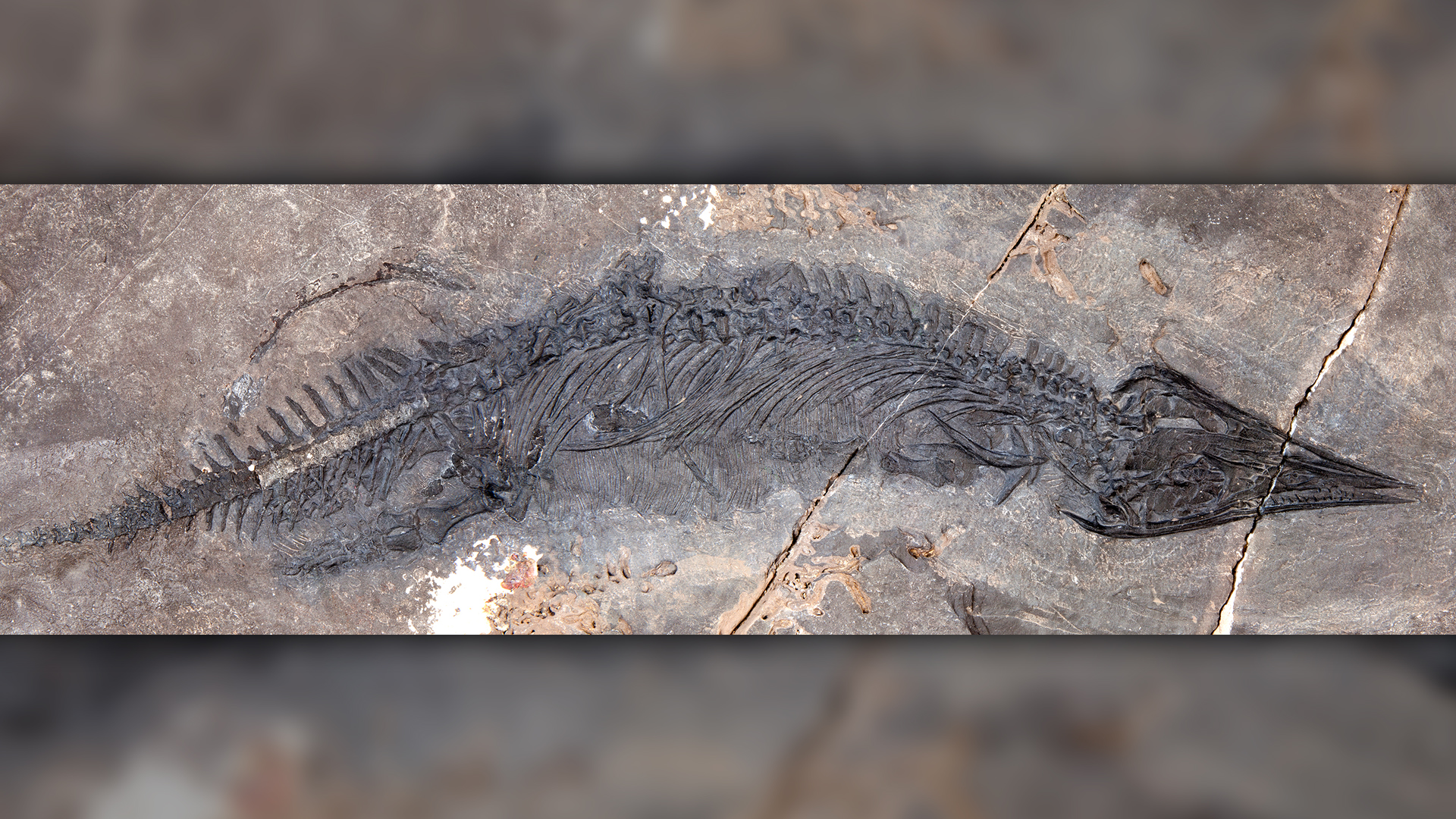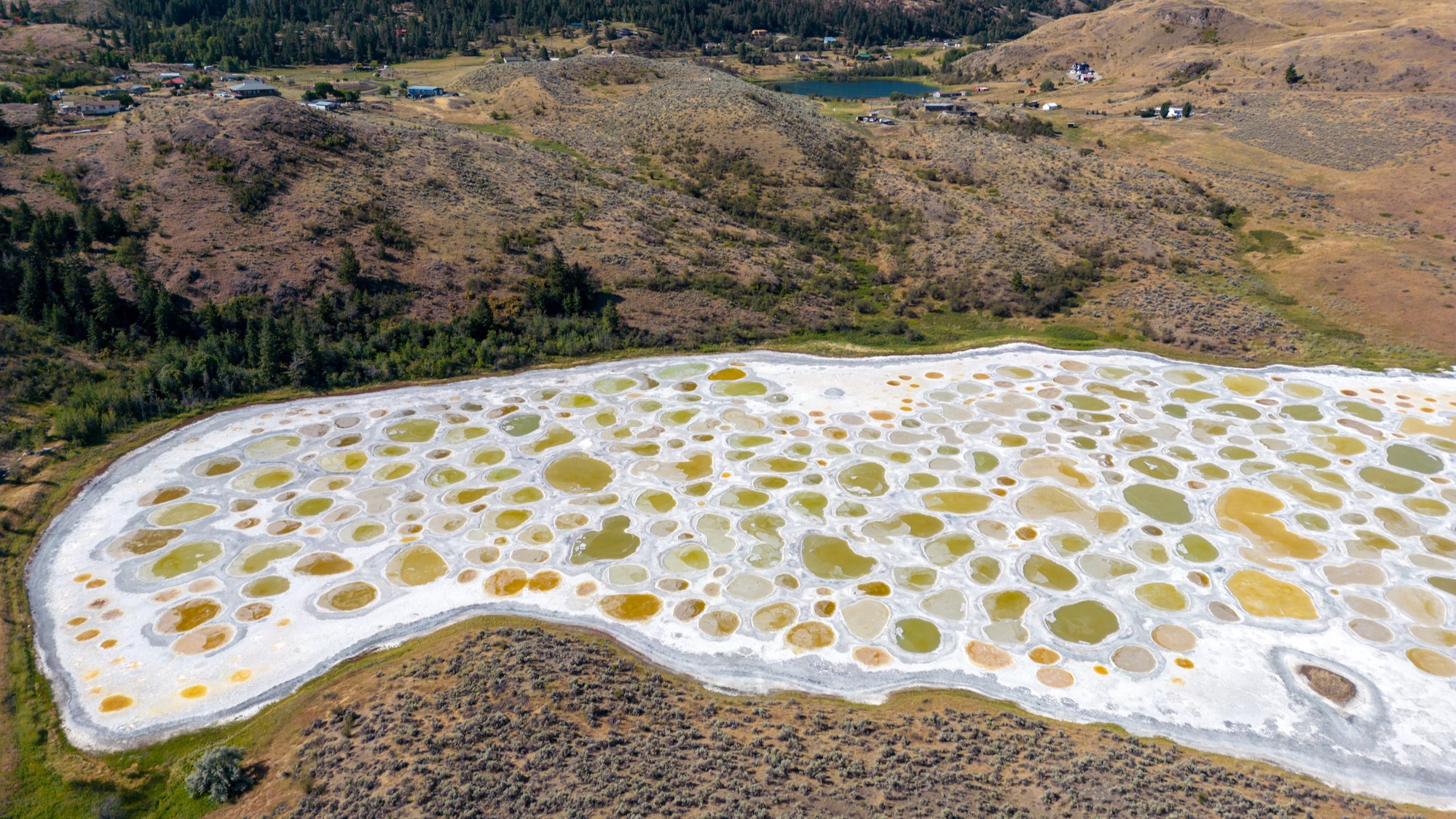Fearsome Triassic 'ocean lizard' was a tweezer-nosed weirdo
Its unusual skull is unlike any in reptiles alive today.

Scientists just discovered the remains of a weirdo sea creature with a “tweezer snout” that would have roamed the seas hundreds of millions of years ago.
Known as thalattosaurs ("ocean lizard"), these reptiles measured up to 16 feet (5 meters) in length, and were around for about 40 million years during the latter part of the Triassic period (251 million to 199 million years ago). They are known from a scant collection of fossils, but the find in Alaska provided researchers with the most complete thalattosaur skeleton unearthed in North America.
The newfound species has a snout that dramatically narrows to a sharp point, giving it the appearance of a tweezer. It represents one of the youngest thalattosaur species in the world, appearing just before the group went extinct around 200 million years ago, scientists reported in a new study.
Related: Photos: Early dinosaur cousin looked like a croc
Jim Baichtal, a geologist with the U.S. Forest Service in Alaska's Tongass National Forest, and colleague Gene Primaky discovered the fossil in May 2011, in a rocky coastal outcrop that lies underwater for most of the year. Researchers knew they would have to work quickly to excavate the skeleton before the tidal cycle submerged the site until the following year, said lead study author Patrick Druckenmiller, director of the University of Alaska (UA) Museum and a professor in the Department of Geosciences at UA Fairbanks.
About a month later, the scientists had their chance, but they didn't have much time: just two four-hour periods over two days when the tide would be low enough during the day for them to carve the fossil from the outcrop.
"We rock-sawed like crazy and managed to pull it out, but just barely," Druckenmiller said in a statement. "The water was lapping at the edge of the site."
Get the world’s most fascinating discoveries delivered straight to your inbox.

They identified the find as a thalattosaur that would have measured 30 to 35 inches (75 to 90 centimeters) long when it was alive. Its scientific name — Gunakadeit joseeae (guh-nuh-kuh-DATE JOE-zee-ay) comes from the name of a sea monster of the Tlingit culture, and the name of Primaky's mother, Joseé Michelle DeWaelheyns, according to the study.
Not only was it a newfound species and the most complete thalattosaur skeleton found in North America, "it was also potentially the youngest occurrence of the group that we know of," Druckenmiller told Live Science.
"In other words, it's one of the last kind of thalattosaurs alive before they went extinct," he said.
Poking for prey
Thalattosaurs, of which there are around 20 known species (mostly from Europe and China) have varying shapes of jaws and teeth, possibly because they targeted different prey.
"Some of these animals have no teeth; some of them have blunt, shell-crushing teeth; some of them have pointy teeth," Druckenmiller told Live Science.
G. joseeae had teeth in the back of its jaw but was lacking teeth in the pointed front part. "So it looks like they were using a wholly different feeding strategy that we've never seen before in this group — or in any reptiles, really," he added.

Clues preserved in the rocks around the fossil suggested that the animal lived in a tropical coastal ecosystem that was home to coral reef habitats; its pointy snout would have been well-suited for combing the shallows and poking into cracks and crevices to dislodge small fish and crustaceans. Once G. joseeae nabbed its prey, it would clamp down with its back teeth "and then suck it in," Druckenmiller said.
Having highly specialized feeding methods likely helped thalattosaurs to thrive, but may have also doomed them when ocean conditions changed and disrupted their habitats, the scientists wrote in the study. By comparison, marine reptiles such as ichthyosaurs and plesiosaurs survived the mass extinction that ended the Triassic, and they may have done so because their feeding behavior wasn't as finely tuned as that of the needle-nosed thalattosaurs.
"Their environment changed so radically at the end of the Triassic that they simply couldn't survive, and the group went extinct," Druckenmiller said. "What might have happened is that thalattosaurs got a little too specialized for their own good."
The findings were published online Feb. 4 in the journal Scientific Reports.
- Images: The oldest dinosaur
- Photos: Unearthing dinosauromorphs, the ancestors of dinosaurs
- Image gallery: 25 amazing ancient beasts
Originally published on Live Science.

Mindy Weisberger is a science journalist and author of "Rise of the Zombie Bugs: The Surprising Science of Parasitic Mind-Control" (Hopkins Press). She formerly edited for Scholastic and was a channel editor and senior writer for Live Science. She has reported on general science, covering climate change, paleontology, biology and space. Mindy studied film at Columbia University; prior to LS, she produced, wrote and directed media for the American Museum of Natural History in NYC. Her videos about dinosaurs, astrophysics, biodiversity and evolution appear in museums and science centers worldwide, earning awards such as the CINE Golden Eagle and the Communicator Award of Excellence. Her writing has also appeared in Scientific American, The Washington Post, How It Works Magazine and CNN.


